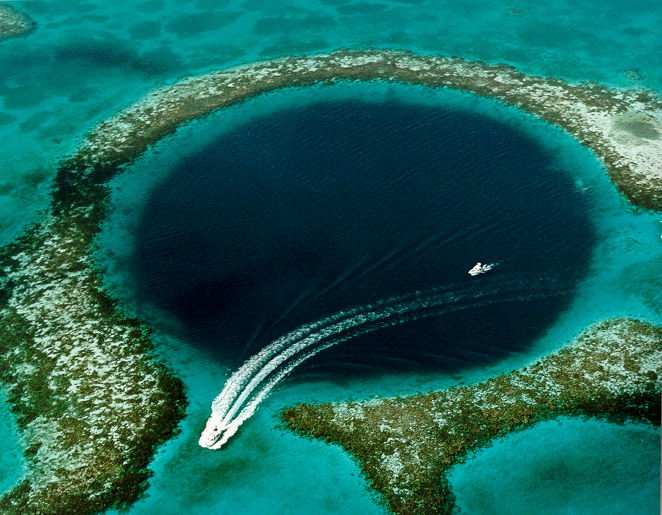Mount Everest, Nepal

There’s something wild and magnetic about the allure of Mount Everest. Despite being the highest point on Earth and a symbol of ultimate achievement, Everest is fraught with danger. In 2023, over 800 climbers tried to reach the summit during the spring season, but only about 60% succeeded. This mountain has claimed more than 300 lives since people started keeping records, and the risks aren’t small—think avalanches, brutal storms, and altitude sickness that can strike even the fittest climbers. The “death zone” above 8,000 meters is notorious for its thin air, which can send seasoned mountaineers reeling. Still, every year, adventurers line up for their shot at the summit, ignoring the perils for that one breathtaking view from the top of the world. The Himalayan Database and National Geographic confirm these ongoing challenges, making Everest both a dream and a danger.
Chernobyl, Ukraine

Chernobyl’s Exclusion Zone might sound like the last place you’d want to visit, but in 2024, over 100,000 tourists ventured into this radioactive ghost town. The ruins of Pripyat, abandoned amusement parks, and the steel sarcophagus encasing Reactor 4 all tell a haunting story of the 1986 disaster. While short guided tours are considered safe, experts warn that long-term health risks from radiation exposure still exist. The Ukrainian government has spent millions on safety measures, but the haunting atmosphere and real stories of loss keep drawing curious travelers. People come to Chernobyl not just for history, but for the surreal, post-apocalyptic landscapes that feel like stepping onto another planet. BBC Travel and Chernobyl Tour highlight the area’s strict safety protocols, but the chilling sense of what happened here lingers long after visitors leave.
The Amazon Rainforest, South America

The Amazon Rainforest is a place of wonder and real danger, a living, breathing jungle that hides both beauty and peril. In 2023, about 2.5 million tourists visited, lured by the chance to see rare wildlife and meet indigenous communities. Yet, the jungle is home to venomous snakes, deadly insects, and sometimes unpredictable weather that can turn a trip into a survival story. The World Wildlife Fund reports that even experienced guides sometimes encounter unexpected threats, from sudden river floods to encounters with jaguars. Vaccinations are essential, and most tours push strict safety protocols to keep guests safe. The Amazon’s “lungs of the Earth” nickname is well earned, but so is its reputation for adventure and risk. Tourists keep coming, drawn by a sense of adventure and the hope of seeing a sloth or pink river dolphin up close.
The Great Blue Hole, Belize

Diving into the Great Blue Hole is like plunging into the heart of a mystery. This giant marine sinkhole off Belize attracts roughly 30,000 divers a year, but it’s no place for beginners. The site’s deep, dark waters and complex underwater structures have caused incidents of decompression sickness, especially for those who underestimate its depths. Marine life flourishes here, and the limestone formations are otherworldly, but the hole’s size and sudden drop-offs can disorient even seasoned divers. National Geographic and PADI emphasize the need for proper certification and caution. It’s a beautiful but unforgiving environment—one that demands respect and preparation. Divers come away with stories of sharks and stalactites, and sometimes a newfound respect for the ocean’s power.
Death Valley, California, USA

Death Valley’s name isn’t an exaggeration—it’s one of the hottest, driest, and most dangerous places on Earth. In the summer of 2024, temperatures soared past 130°F (54°C), a record that didn’t stop more than a million visitors from flocking to see its otherworldly landscapes. The National Park Service warns that dehydration and heatstroke are real threats, and every year, people require rescue after underestimating the harshness of the desert. The salt flats of Badwater Basin and the rolling sand dunes make for stunning photos, but the risk of getting stranded or lost is high. Weather.com and the National Park Service urge travelers to carry gallons of water and avoid hiking during the day. Still, the surreal beauty of the valley is a siren call for those chasing adventure and extremes.
The Danakil Depression, Ethiopia

Visiting the Danakil Depression is like stepping onto another planet—one where the ground bubbles, the air shimmers with heat, and the colors are almost unreal. In 2023, about 5,000 tourists braved this harsh landscape, lured by visions of lava lakes and sulfur springs. The region regularly records temperatures above 120°F (49°C), and the risk of heatstroke is ever-present. Active volcanoes, acid pools, and shifting tectonic plates add even more danger to the mix. Atlas Obscura and National Geographic describe the area as one of the most inhospitable on Earth, yet intrepid travelers can’t resist the challenge. Tours are guided by locals who know how to navigate the shifting terrain and unpredictable geology, but even with precautions, the Danakil Depression isn’t for the faint-hearted.
The Bermuda Triangle

The Bermuda Triangle, stretching between Miami, Bermuda, and Puerto Rico, has a reputation as the world’s most mysterious patch of ocean. In 2024, around 1.5 million tourists visited the region, drawn by stories of vanished ships and planes. While most scientists now believe that natural explanations—like methane gas eruptions or sudden storms—are behind the disappearances, the myth persists. History.com and NOAA point out that the area’s vibrant coral reefs and clear blue waters make it a top spot for boating and snorkeling, but sudden weather changes can catch travelers off guard. The legend of the Bermuda Triangle is part of its pull, making every boat ride or flight just a little more thrilling for those who love a mystery.
The Cliffs of Moher, Ireland

The Cliffs of Moher are both breathtaking and dangerous, rising over 700 feet above the Atlantic and drawing over 1.5 million visitors in 2023. The views are jaw-dropping, but so are the risks—strong winds, slippery paths, and sudden weather changes make the edges treacherous. Despite safety barriers and warning signs, accidents still happen, often to those who ignore the rules for the perfect photo. The Cliffs of Moher Visitor Experience and the Irish Times stress that respecting the boundaries is key, but the drama of the sea crashing below is an irresistible draw. Puffins and other rare birds nest along the cliffs, adding a touch of life to the wild scenery. For many, the danger is just part of the thrill.
The Death Road, Bolivia

Bolivia’s North Yungas Road, better known as Death Road, is a magnet for thrill-seekers on mountain bikes. In 2024, more than 25,000 cyclists tackled its narrow, winding path, which clings to sheer cliffs with drops of up to 2,000 feet. The road’s reputation comes from its deadly history—hundreds of people died here each year before the new highway was built. Today, guided tours with safety gear are the norm, but the road’s combination of fog, rain, and hairpin turns still makes for a heart-pounding ride. BBC Travel and Lonely Planet report that many ride Death Road for the adrenaline rush and the views of lush jungles below, but everyone is reminded that the risk is very real.
The Volcanoes of Indonesia

Indonesia is home to more active volcanoes than any other country—over 120, in fact—and each one is both a marvel and a menace. In 2023, about 1 million tourists visited volcanoes like Mount Merapi and Mount Bromo, eager to see eruptions, glowing lava, and ash clouds firsthand. The Indonesian government closely monitors volcanic activity, issuing warnings and sometimes evacuations, but eruptions can be sudden and unpredictable. Volcano Discovery and National Geographic explain that these sites are at the intersection of danger and beauty, offering breathtaking sunrises and the chance to witness raw geological power. Travelers must follow safety updates and be ready to change plans at a moment’s notice, but the fascination with fire and earth keeps people coming back.







